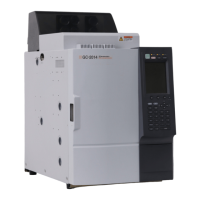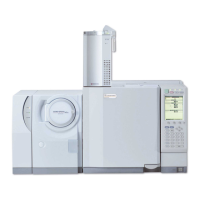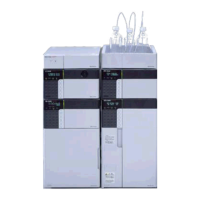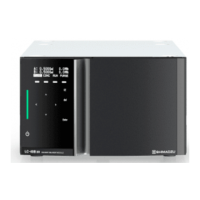83
4.2 Inspection/maintenance intervals
4
4.2 Inspection/maintenance intervals
Perform inspection/maintenance periodically, and also before analysis.
WARNING
• RISK OF BURNSDO NOT perform maintenance until the temperature of component you are going to work
on (column oven, injection port, or detector) drops below 40C.
• When using reagents such as organic solvents or acids, work in a well-ventilated area using a drafter or
other ventilation equipment.
ALWAYS wear protective clothing, such as goggles, gloves, and a lab coat.
If reagents get on the skin or in the eyes, flush with copious amounts of water and consult a medical
professional.
CAUTION
• To prevent screws and nuts from burning, DO NOT turn them when the component you are working on is at
high temperature.
Item Inspection interval Solution Reference
Glass insert Before starting a series of
analysis.
If you find stains or dirt,
cleanse them.
Refer to "4.6 Glass insert" P.
91.
O-ring for glass insert When replacing glass insert. Replace it. Refer to "4.5 O-ring for
glass insert" P. 89.
Septum After 100 injections. Replace it. Refer to "4.4 Septum" P. 87.
Graphite ferrule Each time when installing
columns.
If there is no gap between
back ring and side ring,
replace it.
Refer to "4.7 Graphite
ferrule" P. 94.
Capillary column When using brand-new
columns, or those unused
for long time.
Condition them. Refer to "4.9 Capillary
column" P. 97.
Flow controller split flow line
and septum purge flow line
trap
Each 6 month If there is a blockage,
replace it.
Unit surfaces Each time when using the
GC.
For surface stains, wipe
them with a dry, soft cloth.
For heavy stains, dip cloth
with mild detergent water,
twist well, and wipe with it.
DO NOT use organic
solvent to avoid damaging
plastic or painted surfaces.
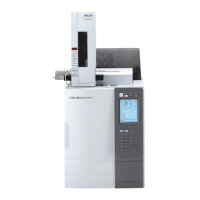
